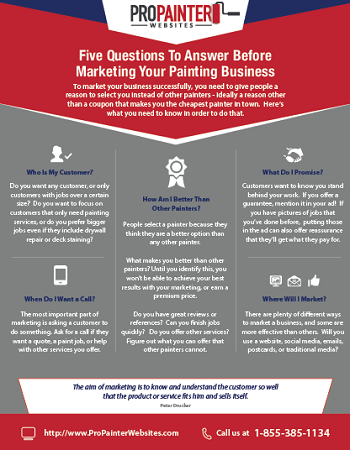Understanding Seasonal Influences On Commercial Outside Paint: Important Knowledge For Success
Understanding Seasonal Influences On Commercial Outside Paint: Important Knowledge For Success
Blog Article
Write-Up Developed By-Doherty Rosendal
When you're intending an industrial external painting project, seasonal variables can make or break your outcomes. You'll wish to think about exactly how temperature and humidity impact paint application and drying times. Picking the best season can guarantee your paint sticks effectively and lasts longer. But which seasons are truly the best for this sort of work? Allow's check out the key elements that can affect your job's success.
The Effect of Temperature Level on Paint Application
When you're planning a business exterior paint task, the temperature can considerably affect exactly how well the paint sticks and dries out.
Ideally, you want to repaint when temperature levels range between 50 ° F and 85 ° F. If it's too cool, the paint might not heal correctly, causing issues like peeling or splitting.
On the other side, if it's as well warm, the paint can dry out too swiftly, stopping correct adhesion and causing an uneven coating.
You ought to additionally consider the time of day; early morning or late afternoon uses cooler temperatures, which can be much more beneficial.
Always inspect the producer's recommendations for the certain paint you're using, as they usually supply advice on the excellent temperature level variety for optimum results.
Moisture and Its Impact on Drying Times
Temperature isn't the only ecological element that influences your commercial outside painting project; humidity plays a significant role as well. High moisture levels can decrease drying times dramatically, influencing the total quality of your paint job.
When the air is filled with wetness, the paint takes longer to treat, which can lead to problems like bad bond and a higher threat of mildew development. If you're painting on an especially humid day, be planned for prolonged delay times in between layers.
It's important to monitor regional weather conditions and strategy as necessary. Preferably, go for moisture degrees in between 40% and 70% for optimum drying out.
Maintaining these factors in mind ensures your job remains on track and delivers a lasting finish.
Best Seasons for Commercial Exterior Painting Projects
What's the most effective season for your industrial outside paint jobs?
Springtime and early loss are typically your best options. During painterslanellc , temperature levels are mild, and humidity levels are commonly lower, creating ideal conditions for paint application and drying.
Avoid https://exterior-house-painters-n66665.smblogsites.com/34456239/employ-professional-house-painters-to-improve-your-home-s-aesthetic-allure-and-discover-the-amazing-outcomes-that-will-leave-you-desiring-even-more , which can cause paint to dry too quickly, resulting in poor attachment and surface. Similarly, winter season's cool temperatures can hinder appropriate drying and curing, risking the durability of your paint task.
visit the up coming site for days with temperature levels between 50 ° F and 85 ° F for optimum results. Bear in mind to examine the regional weather report for rainfall, as damp problems can destroy your project.
Preparation around these aspects guarantees your paint project runs efficiently and lasts longer.
Conclusion
To conclude, intending your commercial external painting jobs around seasonal factors to consider can make a substantial difference in the outcome. By organizing work throughout the ideal temperatures and humidity degrees, you'll make certain better adhesion and drying times. Bear in mind to watch on regional weather prediction and choose the right time of year-- springtime and early loss are your best options. Taking these actions will certainly assist you achieve a resilient and professional surface that lasts.
